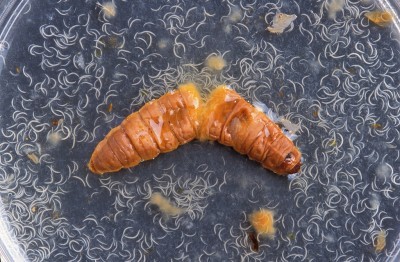






Entomopathogenic nematodes are rapidly gaining in popularity as a proven method of eradication of insect pests. But what are beneficial nematodes? Keep reading for more information on using nematodes as pest control.
Members of the Steinernematidae and Heterorhabditidae families, beneficial nematodes for gardening purposes, are colorless roundworms which are non-segmented, elongated in shape and usually microscopic and commonly found living within the soil.
Entomopathogenic nematodes, or beneficial nematodes, can be used to control soil borne insect pests but are useless for control of pests found in the leaf canopy. Beneficial nematodes for gardening insect control may be used to squash pests such as:
There are also bad nematodes and the difference between good nematodes and bad ones is simply which host they attack; bad nematodes, also called non-beneficial, root-knot or “plant parasitic” nematodes, cause damage to crops or other plants.
Beneficial nematodes as pest control will attack soil borne insect pests with no harmful effects on earthworms, plants, animals or humans, making it an environmentally friendly solution. They are morphologically, ecologically and genetically more diverse than any other animal group with the exception of arthropods.
With over 30 species of entomopahogenic nematodes, each with a unique host, finding a suitable nematode to aid in pest control is not only a “green” solution of integrated pest management but a simple one as well.
Beneficial nematodes have a lifecycle consisting of egg, four larval stages and an adult stage. It is during the third larval stage that the nematodes seek a host, usually insect larvae, and enter it through the host mouth, anus or spiracles. The nematode carries bacteria called Xenorhabdus sp., which is subsequently introduced into the host whereupon death of the host occurs within 24 to 48 hours.
The Steinernematids develop into adults and then mate within the host’s body, while the Heterorhabditids produce hermaphroditic females. Both nematode species ingest the host’s tissue until they mature to the third juvenile phase and then they leave the remains of the host body.
Using beneficial nematodes for gardening pest control has become an increasingly popular method for six reasons:
Beneficial nematodes for gardening can be found in sprays or soil drenches. It is crucial to apply them at the perfect environmental conditions needed for their survival: warm and moist.
Irrigate the application site both before and after introducing the nematodes and only use them when soil temperatures are between 55-90 F. (13-32 C.) in filtered sun.
Use the nematode product within the year and do not store in areas of high heat. Remember, these are living creatures.
Copyright © www.100flowers.win Botanic Garden All Rights Reserved